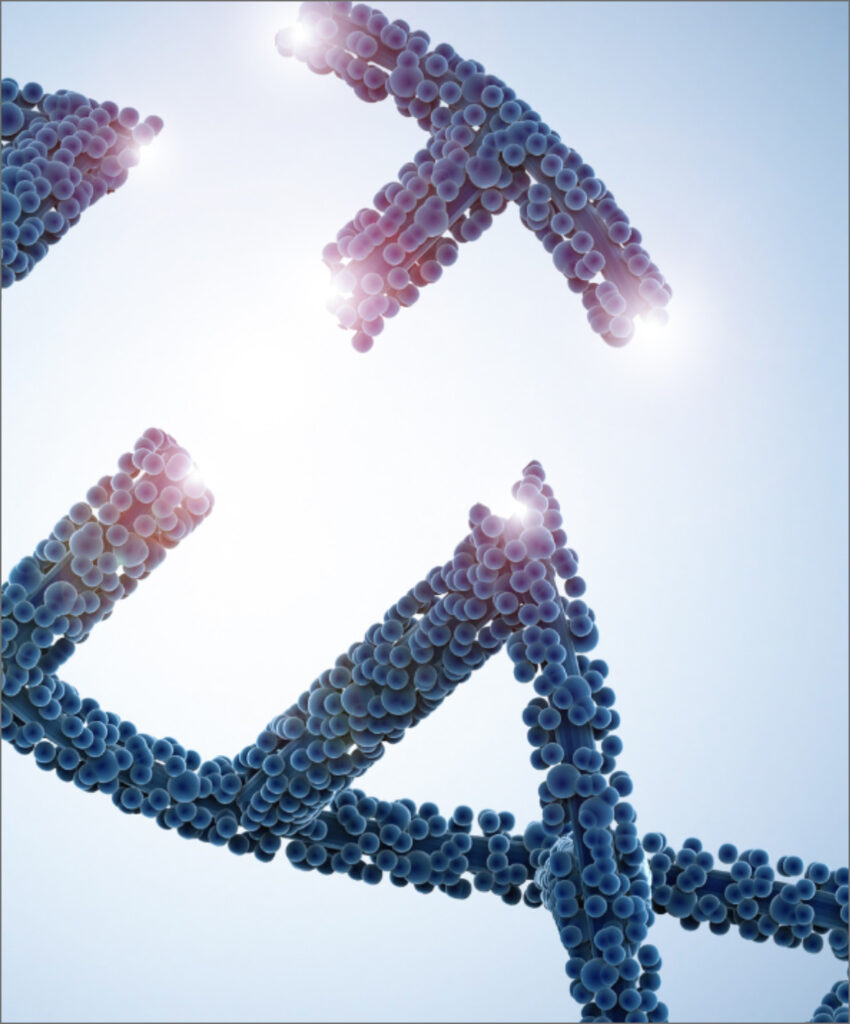THE PROJECT WILL ADDRESS, IN A MULTISTEP APPROACH, SEVERAL CRITICAL POINTS TO ACHIEVE EFFECTIVE AND SAFE GENE THERAPY:
Enhancement of specificity of genomic corrections and broadening of possible genome modifications. Current Cas9 nuclease-based strategies relying on homology-directed repair (HDR)-mediated gene correction are poorly efficient and associated with double-strand break (DSB)-induced toxicity. Novel DSB-free base editing strategies have been recently developed but are unable to revert all the disease-causing mutations9.
Prime editing (PE) has emerged as a novel technology able to induce all 12 possible base conversions and insertions or deletions, thus being potentially capable of correcting up to 89% of known human disease-associated genetic variants5. Importantly, PE is based on a Cas9 nickase that avoids the induction of DSBs and thus unwanted off-target mutations and on-target large deletion associated with Cas9 nuclease. We will base our strategies on the evolution of the PE method, thus offering the possibility of correcting any mutation consisting of small insertions/deletions (INDELs) or single nucleotide polymorphisms (SNPs), a common feature of virtually all rare genetic diseases.
Our ambitions

Through the combination of disruptive gene editing technologies with enhanced delivery vectors, EdiGenT will enable targeted gene modifications in vivo in any tissue of interest with higher efficiency and reduced toxicity than currently available methodologies.
The novel strategies developed in this proposal have the potential to strongly impact the portfolio of actions addressed in this challenge. The establishment of novel gene editing tools will be relevant, for instance, to the more efficient multiplex gene editing toward the goal of developing universal CAR-T cells. The development of novel non-viral based delivery systems for cell specific-targeting can be applied to other gene therapy approaches.
Finally, our humanized zebrafish model system to assess the efficacy of gene delivery and cell specific targeting can benefit other projects in the portfolio of action providing a low cost, high-throughput system that due to its simplicity also addresses the implementation of 3Rs (Replacement, Reduction, Refinement) in animal research.
Edigent concept
Our proposed technological breakthroughs will overcome crucial limitations of gene editing efficiency and in vivo delivery thus meeting key needs of the Cell and Gene Therapy Challenge.

Novel strategy for more efficient prime editing in human cells
Targeted delivery of gene editing reagents to human cells
Plausibility, methodology and development of new strategies
From in vitro to in vivo: test of novel gene editing tools in the zebrafish
Development of a specific non-viral delivery system
Development of a humanized zebrafich models to access specificity and efficacy of tissue targeting
Transfer of the identified gene theraty technology to reulatedg preclinical models (HSPC and humanized mous models)
The main objectives of EdiGenT, aimed at tackling these challenges, are:
Development of a new generation of gene correction tools.
Gene therapy approaches require extreme precision of correction of disease-causing mutations. As an alternative to standard CRISPR/Cas9-based approaches, leading to double strand breaks (DSBs) and unintended DNA mutations, a key breakthrough was the recent invention of prime editing (PE)5.
This technique is based on the fusion of a Cas9 nickase to a MMLV (Moloney Murine Leukemia Virus) Reverse Transcriptase, which pioneered copying of the sequence change of interest from a template RNA sequence added at the 3’ end of the guide RNA targeted to the genomic locus to be modified; this is a powerful “all-in-one system” strategy for precise genome editing.
Here, we propose novel technologies in order to expand the range of sequence modifications possible and dramatically increase the effectiveness of gene correction.
Establishment of targeted non-viral in vivo delivery systems for CRISPR/Cas9-based ribonucleoprotein complexes using functionalized nanoparticles
We aim to develop nanoparticles that can be easily adapted to target different organs; as proof of principle, we will test the approach on the hematopoietic system.
Current genetic therapies of the hematopoietic system rely on ex vivo treatment of isolated hematopoietic stem cells (HSCs), followed by reinfusion in the patient (autologous HSC transplantation)4. To make room for the transplanted HSCs, the bone marrow niche must be cleared of hematopoietic cells first. This is achieved by ‘conditioning’ of the patient through treatment with chemotherapeutic agents. It would be hugely beneficial for safety, simplicity and cost of treatments if genetic correction of HSCs could be achieved in situ, without affecting the bone marrow niche.
Current vectors, which are based on lentivirus (LV) or adeno-associated virus (AAV), are not capable of targeting HSCs in the bone marrow6. Here, we propose to overcome this hurdle by developing nanoparticles for targeted in vivo delivery of RNPs (ribonucleoproteins) to HSCs in the bone marrow niche.
Assessment of efficacy and safety of the breakthrough approaches in cellular and humanized animal models
We aim to achieve appropriate delivery of the gene modification machinery to the target cells testing efficacy and ensuring minimal toxicity. To prove that our tools are valid candidates for clinical applications, we will perform a comprehensive characterization of their safety, specificity and efficiency in vitro and in vivo.
First, the ability to perform precise gene modification and targeted delivery will be evaluated in cellular models. Second, Zebrafish will be employed as the first in vivo model to test the translatability of our methodology. Finally, we will test our innovative gene therapy approach in a disease-relevant model, using humanized mice as a preclinical model of sickle cell disease (SCD).
EdiGenT will provide breakthrough approaches to increase effectiveness of both gene modifications and targeted delivery and reduce potential adverse effects that current methodologies are facing. Furthermore, the project will lead to the establishment of a comprehensive platform for high-throughput testing of novel gene therapy strategies for continuous improvements by researchers in both academic and industrial settings.
The project will address, in a multistep approach, several critical points to achieve effective and safe gene therapy.